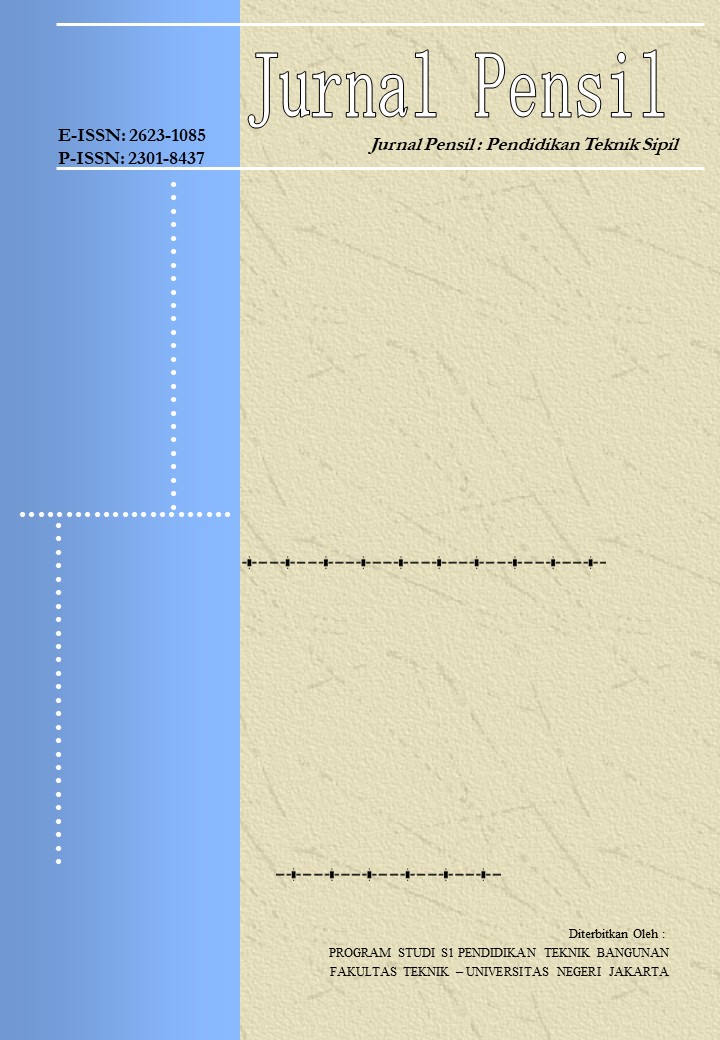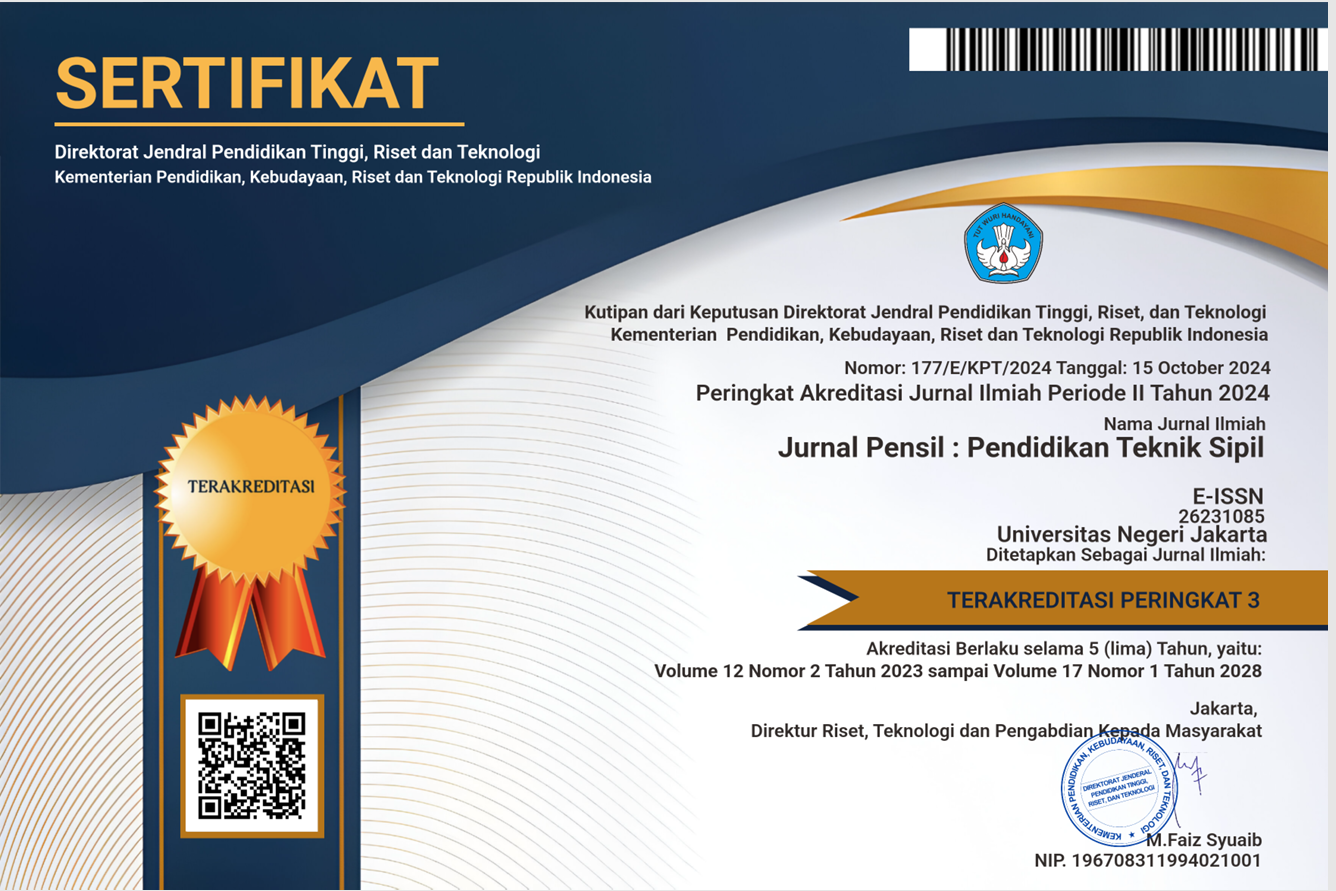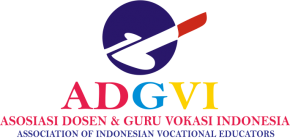THE EFFECT OF PREPAREDNESS MEASURES ON COMMUNITY PARTICIPATION IN FLOOD EMERGENCY RESPONSE IN RANGKASBITUNG DISTRICT
DOI:
https://doi.org/10.21009/jpensil.v11i3.28423Keywords:
Action Preparedness, Community Participation, FloodAbstract
Every disaster brings victims, both human and property is a fact. But whatever the type of disaster, there is always an omen before it comes. This is where the urgency is to understand every sign that comes correctly and accurately. So, of course, knowledge, skills, and skills are needed on how the community, especially in disaster-prone areas, prepares anticipatory steps for the arrival of the disaster (Priyowidodo and Luik 2013). The readiness and skills of the community, especially families, are the primary keys to safety in dealing with disaster emergencies (Willem Rampangilei 2018). This study aims to determine the effect of preparedness measures on community participation in flood emergency response. This research uses research that uses correlational survey method. In this study, the independent variable is community participation in disaster emergency response, while the dependent variable is preparedness measures. This study aimed to determine the effect of preparedness measures on community participation in flood emergency response. The results of the survey: Preparedness measures (X) affect the community participation variable (Y) by 16%.
References
Ali, S., & George, A. (2021). Fostering disaster mitigation through community participation- case of Kochi residents following the Kerala floods of 2018 and 2019. Natural Hazards, 0123456789. https://doi.org/10.1007/s11069-021-05058-0
Amaratunga, D., Malalgoda, C., Haigh, R., Panda, A., & Rahayu, H. (2018). Sound Practices of Disaster Risk Reduction at Local Level. Procedia Engineering, 212(2017), 1163–1170. https://doi.org/10.1016/j.proeng.2018.01.150
Aprilin, H. (2018). Kesiapsiagaan Sekolah Terhadap Potensi Bencana Banjir di SDN Gebangmalang Kecamatan Mojoanyar Kabupaten Mojokerto. Jurnal Biosains Pascasarjana, 20(2), 133. https://doi.org/10.20473/jbp.v20i2.2018.133-145
Arsiadi Wisnu Hapsoro, I. B. (2015). Kajian Kerentanan Sosial Dan Ekonomi Terhadap Bencana Banjir (Studi Kasus: Wilayah Pesisir Kota Pekalongan). Teknik PWK (Perencanaan Wilayah Kota), 4(4), 542–553.
BNPB. (2018). Pedoman Komando Tanggap Darurat Bencana Nomor 10 Tahun 2018. 2--3.
Bowman, L. J., & Henquinet, K. B. (2015). Disaster risk reduction and resettlement efforts at San Vicente (Chichontepec) Volcano, El Salvador: Toward understanding social and geophysical vulnerability. Journal of Applied Volcanology, 4(1). https://doi.org/10.1186/s13617-015-0031-0
David Webber, Andrew Gissing, Neil Dufty, & Dr Deanne Bird. (2017). Community participation in emergency planning: NSW State Emergency Service case study. Australian Journal of Emergency Management, 32(2), 28–34.
Dinas Lingkungan Hidup dan Kehutanan Provinsi Banten. (2017). Laporan Akhir Tahun Penyusunan Neraca Sumber Daya Alam Provinsi Banten 2017.
Erlia, Devi, Rosalina Kumalawati, & N. F. A. (2017). Analisis Kesiapsiagaan Masyarakat Dan Pemerintah Menghadapi Bencana Banjir Di Kecamatan Martapura Barat Kabupaten Banjar. JPG (Jurnal Pendidikan Geografi), 4(3), 15–24.
Gustini, S., Subandi, A., & Oktarina, Y. (2021). Gambaran Kesiapsiagaan Masyarakat dalam Antisipasi Bencana Banjir di Kecamatan Danau Kerinci Barat Kabupaten Kerinci Pendahuluan Bencana banjir termasuk bencana terbesar di dunia . Data Guidelines for Reducing Flood Losses , United Nations International S. Jurnal Ilmiah Ners Indonesia, 2(1).
Hapsari, R. I., & Zenurianto, M. (2016). View of Flood Disaster Management in Indonesia and the Key Solutions American Journal of Engineering Research ( AJER ). American Journal of Engineering Research, 5(3), 140–151.
Hasana, U., Harahap, A. S., Putra, I. D., & Wulandari, P. M. (2020). Tingkat pengetahuan dan sikap masyarakat berhubungan dengan disaster preparedness banjir. Jurnal Gawat Darurat, 2(2), 67–74.
Jos, S. (2016). Continuity and change in the applied anthropology of risk, hazards, and disasters. Annals of Anthropological Practice, 40(1), 6–13. https://doi.org/DOI: 10.1111/napa.12083
Kundzewicz, Z. W., Kanae, S., Seneviratne, S. I., Handmer, J., Nicholls, N., Peduzzi, P., Mechler, R., Bouwer, L. M., Arnell, N., Mach, K., Muir-Wood, R., Brakenridge, G. R., Kron, W., Benito, G., Honda, Y., Takahashi, K., & Sherstyukov, B. (2014). Le risque d’inondation et les perspectives de changement climatique mondial et régional. Hydrological Sciences Journal, 59(1), 1–28. https://doi.org/10.1080/02626667.2013.857411
Kurniati, E., Adriany, V., Mirawati, M., Winangsih, I., & El-Siera, R. M. (2020). Pelatihan Pengurangan Risiko Bencana Bagi Guru Taman Kanak-Kanak Di Kota Bandung. Cakrawala Dini: Jurnal Pendidikan Anak Usia Dini, 11(1), 1–9. https://doi.org/10.17509/cd.v11i1.21552
Maddeppungeng, A., Wigati, R., & Pratiwi, B. D. (2017). KAJIAN ALTERNATIF PENANGGULANGAN BANJIR ( Studi Kasus DAS Ciujung Bagian Hulu , Banten ) Penanggulangan Banjir pada Deputi Bidang. Jurnal Konstruksia, 8(2), 9–22.
Mantasia, & Jaya, H. (2016). Model Pembelajaran Kebencanaan Berbasis Virtual Sebagai Upaya Mitigasi Dan Proses Adaptasi Terhadap Bencana Alam Di Smp. Jurnal Penelitian Pendidikan, 19(1), 1–14.
Murase, M., Tyagi, A. C., Saalmueller, J., & Nagata, T. (2008). ORGANIZING COMMUNITY PARTICIPATION FOR FLOOD MANAGEMENT A Tool for Integrated Flood Management. Management, ORGANIZING(March 2008), 1–10.
Pahlevy, H. O. (2018). Arahan adaptasi kawasan rawan bencana banjir di kawasan perkotaan kabupaten sampang. Jurnal Administrasi Publik Mahasiswa Universitas Brawijaya, 5(7), 1–345.
Paripurno, E. T., Ismunandar, Didin Wahidin, Shando, O. N., Munadi, K., Sorja Koesuma, Nazli Ismail, & Djati Mardiatmo. (2019). Panduan Pembelajaran Kebencanaan Untuk Mahasiswa Di Perguruan Tinggi. Direktorat Jenderal Pembelajaran dan Kemahasiswaan Kementrian Riset Teknologi dan Pendidikan Tinggi.
Peek, L., Abramson, D. M., Cox, R. S., Fothergill, A., & Tobin, J. (2018). Children and Disasters. Handbooks of Sociology and Social Research, November, 243–262. https://doi.org/10.1007/978-3-319-63254-4_13
Permana, I. Y. (2019). Pendidikan Keaksaraan Dasar Literasi Mitigasi Bencana. XII, 18–27.
Priyowidodo, G., & Luik, J. E. (2013). Literasi Mitigasi Bencana Tsunami untuk Masyarakat Pesisir di Kabupaten Pacitan. Ekotrans, 13(1), 47–61.
Sharma, R. (2021). Community Based Flood Risk Management: Local Knowledge and Actor’s Involvement Approach from Lower Karnali River Basin of Nepal. Journal of Geoscience and Environment Protection, 09(06), 35–65. https://doi.org/10.4236/gep.2021.96003
Spiekermann, R., Kienberger, S., Norton, J., Briones, F., & Weichselgartner, J. (2015). The Disaster-Knowledge Matrix - Reframing and evaluating the knowledge challenges in disaster risk reduction. International Journal of Disaster Risk Reduction, 13, 96–108. https://doi.org/10.1016/j.ijdrr.2015.05.002
Suhardjo, D. (2015). Arti Penting Pendidikan Mitigasi Bencana Dalam Mengurangi Resiko Bencana. Jurnal Cakrawala Pendidikan, 2, 174–188. https://doi.org/10.21831/cp.v0i2.4226
Sung-Chin Chung, & Cherng-Jyh Yen. (2016). Disaster Prevention Literacy among School Administrators and Teachers: A Study on the Plan for Disaster Prevention and Campus Network Deployment and Experiment in Taiwan. Journal of Life Sciences, 10(4), 203–214. https://doi.org/10.17265/1934-7391/2016.04.006
Suryadi, T., Zulfan, Z., & Kulsum, K. (2021). The Relationship between Knowledge and Attitudes about Community Disaster Preparedness in Lambung Village, Banda Aceh. International Journal of Disaster Management, 4(1), 1–10. https://doi.org/10.24815/ijdm.v4i1.19993
Umeidini, F., Nuriah, E., & Fedryansyah, M. (2019). Partisipasi Masyarakat Dalam Penanggulangan Bencana Di Desa Mekargalih Kecamatan Jatinangor. Focus : Jurnal Pekerjaan Sosial, 2(1), 13. https://doi.org/10.24198/focus.v2i1.23115
Venkataramanan, V., Lopez, D., McCuskey, D. J., Kiefus, D., McDonald, R. I., Miller, W. M., Packman, A. I., & Young, S. L. (2020). Knowledge, attitudes, intentions, and behavior related to green infrastructure for flood management: A systematic literature review. Science of the Total Environment, 720, 137606.
Weichselgartner, J., & Pigeon, P. (2015). The Role of Knowledge in Disaster Risk Reduction. International Journal of Disaster Risk Science, 6(2), 107–116. https://doi.org/10.1007/s13753-015-0052-7
Wibowo, Y. A., Dewi, R. P., Ronggowulan, L., Anjarsari, R. Y., & Miftakhunisa, Y. (2020). Penguatan Literasi Mitigasi Bencana Angin Puting Beliung untuk Peningkatan Kapasitas Masyarakat Desa Munggur, Kabupaten Boyolali, Jawa Tengah. Warta LPM, 23(2), 165–179.
Wijaya, M. D. A. and O. (2019). Analisis Kesiapsiagaan Masyarakat dalam Menghadapi Bencana Kebakaran Pada Kawasan Permukiman Padat Penduduk.
Willem Rampangilei. (2018). Panduan Kesiapsiagaan Bencana Untuk Keluarga. 1–64.
WMO (World Management Organitation. (2017). Community-based flood management. Integrated Flood Management Tools Series, 4, 1–86.
Woodford, K. O. (2015). Sendai Framework for Disaster Risk Reduction 2015 - 2030. Badan Nasional Penanggulangan Bencana.
Yanuarto;, T. (2015). Buku Saku tanggap tangkas tangguh menghadapi bencana. pusat data informasi dan humas bnpb.
Yatnikasari, S., Pranoto, S. H., & Agustina, F. (2020). Pengaruh Pengetahuan dan Sikap Terhadap Kesiapsiagaan Kepala Keluarga dalam Menghadapi Bencana Banjir. Jurnal Teknik, 18(2), 135–149. https://doi.org/10.37031/jt.v18i2.102
Yushanthi, Y., & K.W.G. Rekha Nianthi, K. W. G. R. N. (2021). Human Response to Flood Disaster in Kandawalai in Kilinochchi District in Sri Lanka. International Journal of Disaster Management, 4(2), 51–60. https://doi.org/10.24815/ijdm.v4i2.20581











.png)
.png)
1.png)

